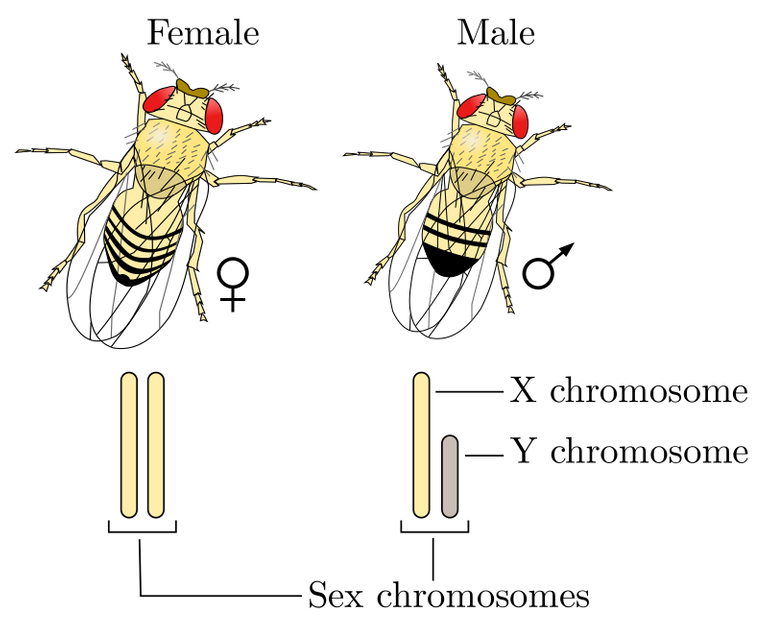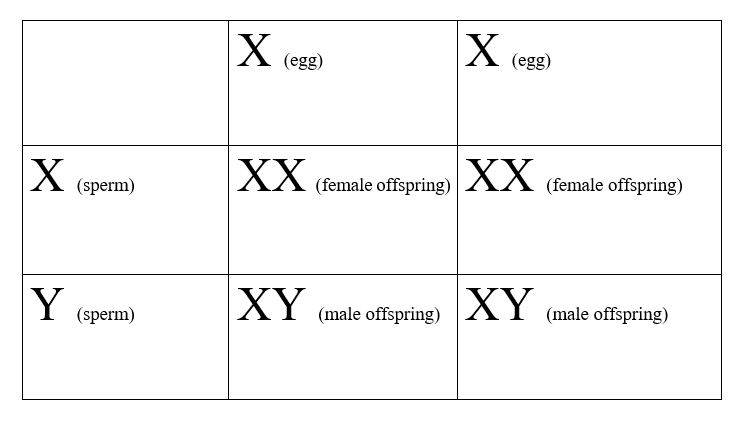Introduction
In many African cultures, Nigeria especially, the male child carries a lot of weight. Every couple wishes to give birth to a male child and it is not uncommon to see couples trying the luck again after repeatedly producing only female children. One popular saying actually refers to the male child as the pole of the house. In a particular tribe in Nigeria, female children have no right to their father's inheritance. Hence, a woman that produced only female children is usually denied access to her husband's property in case of the demise of the husband. This why women in this culture would go to any length to have, at least, a male child.
Culturally, women are often saddled with the blame in cases of only female children. Many are victimized and in extreme cases, the husband goes out to have extramarital affairs or even marry multiple wives just to secure male children. In some cases, it works out, and in many cases, it does not. How exactly do these things work? What determines maleness or femaleness in living organisms? Let us go on a little journey.
Sex Determination in living organisms
First, there is a need to understand that not all living organisms exhibit sexual dimorphism, that is, the occurrence of male and female organisms of the same species separately. The phenomenon only occurs in higher animals and in some higher plants as well. Various hypotheses have been earlier formulated to explain how sex is determined in living organisms that exhibit sexual dimorphism. The most popular among the hypothesis was the one proposed by Aristotle in which he opined that the heat of the male during the process of intercourse determines the sex of the offspring that will emanate from such mating. Ridiculous!, you will say but Aristotle's assertion was not entirely wrong as it was later found that some reptiles exhibit temperature-dependent sex-determination systems.

With the advancement in biology through the invention of the microscope and techniques of isolating chromosomes from living organisms, scientists have been able to unravel the processes that determine the sex in many living organisms.
Since then, it has been discovered that the presence of extra chromosomes determines who is going to be the male or the female in some species of animal. For example, in grasshopper, the male has 18 chromosomes while the female has 19. In the broad-headed bug, the cells of the male have 11 chromosomes each while those of the females have 12. Hence, the presence of an extra chromosome determines femaleness in these organisms. 1, 2
In some other animal species, maleness or femaleness is determined by the chromosome system. A special pair of chromosome exists in the genome that determines the sex of the organism - the sex chromosome. The most popular sex chromosome system that determines maleness/femaleness is the XY chromosome system that is found in many mammals and reptiles, some insects, and even in a plant like Gingko. 3.
In the XY sex-determination system, one of the sexes is usually homogametic with XX chromosome while the other is heterogametic with XY chromosome. The two X chromosomes are usually homologous with the X chromosome in the XY sex chromosome. For example, in humans and in other mammals, the male is the heterogametic one with XY chromosome while the female is the homogametic gender with XX chromosome. During meiosis and the formation of gametes, the male produces two different types of sperms - X and Y sperms - while the female is only able to produce only one type of egg - the X egg. 4
During reproduction in humans, a process that is accompanied by the fusion of sperm and egg, the gender of the offspring that would be produced depends largely on which of the two sperms is able to successfully fuse with the released egg from the female. If the X sperm is the successful one, a female offspring results. On the other hand, if the Y sperm is the one that is able to successfully fuse with the egg, a male offspring results. The entire process is represented in the Punnet's square in the image below.

From the illustration, one can see that the probability of producing either of the sexes as a child is 50%. The sperm that wins the fertilization battle will determine the sex of the child. In other words, the man is indirectly responsible for the sex of a child. There have been several investigations into factors that might possibly influence the production of a particular type of sperm over the other in males in order to influence the sex of a baby. While genetic factors have been reported as the major drive on the ratio of X to Y sperms that are produced in the reproductive organ of men, some researchers have also reported how a specific sperm type has the ability to thrive more in acidic or basic conditions of the vagina and how this can be manipulated to influence the sex of a baby resulting from intercourse.
In addition to the XY system, some organisms exhibit what is known as ZW sex-determining chromosome system. Here, the female, rather than the male is heterogametic with ZW chromosome while the male is homogametic with ZZ chromosome. This type of sex-determination system is found in many birds, fishes, reptiles, and plants.5
Too long? Didn't read?
There are different systems of determining sex in living organisms. A special type of mechanism, a temperature-dependent mechanism, is exhibited by some reptiles in which the temperature of the egg while in incubation determines the sex of the offspring. The presence of an extra chromosome determines maleness or femaleness in grasshoppers with the female having 19 chromosomes while the male has 18. Humans and mammals exhibit a XY sex-determination system in which the male has a heterogametic XY chromosome and the female has a homogametic XX chromosome. Thus, the male indirectly dictates the sex of a baby, unlike the belief of many Africans who victimize women for giving birth to only female children. Some other organisms exhibit the ZW sex-determination system in which the female is heterogametic with ZW chromosome and the male is homogametic with ZZ chromosome.
Thank you all for reading.
Thanks for your contribution to the STEMsocial community. Feel free to join us on discord to get to know the rest of us!
Please consider supporting our funding proposal, approving our witness (@stem.witness) or delegating to the @stemsocial account (for some ROI).
Please consider using the STEMsocial app app and including @stemsocial as a beneficiary to get a stronger support.
Wow muy interesante y explicito lo que has explayado en este post, saludos.
I didn’t know 😀 now i know 😊 thanks
Interesanting nice :)